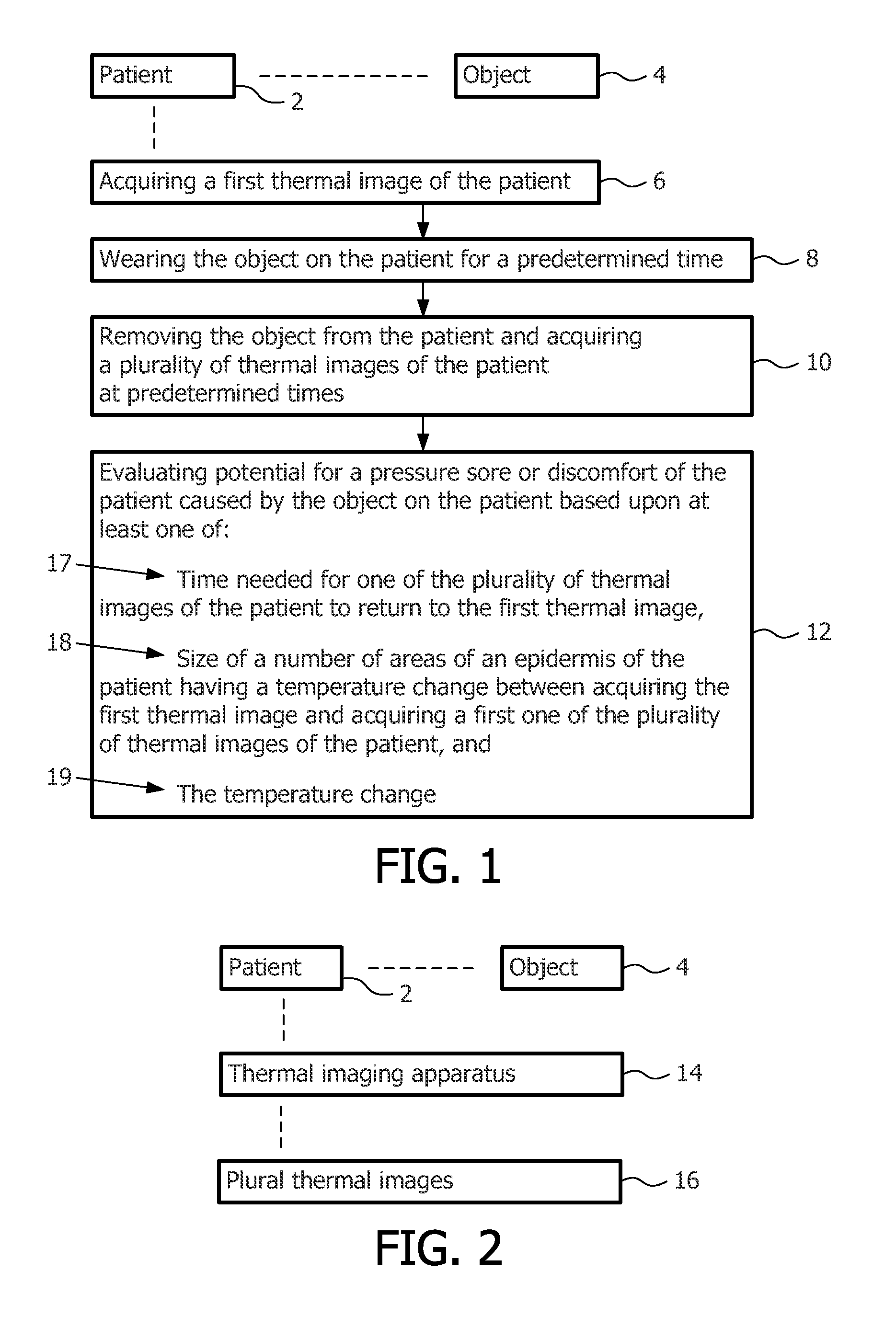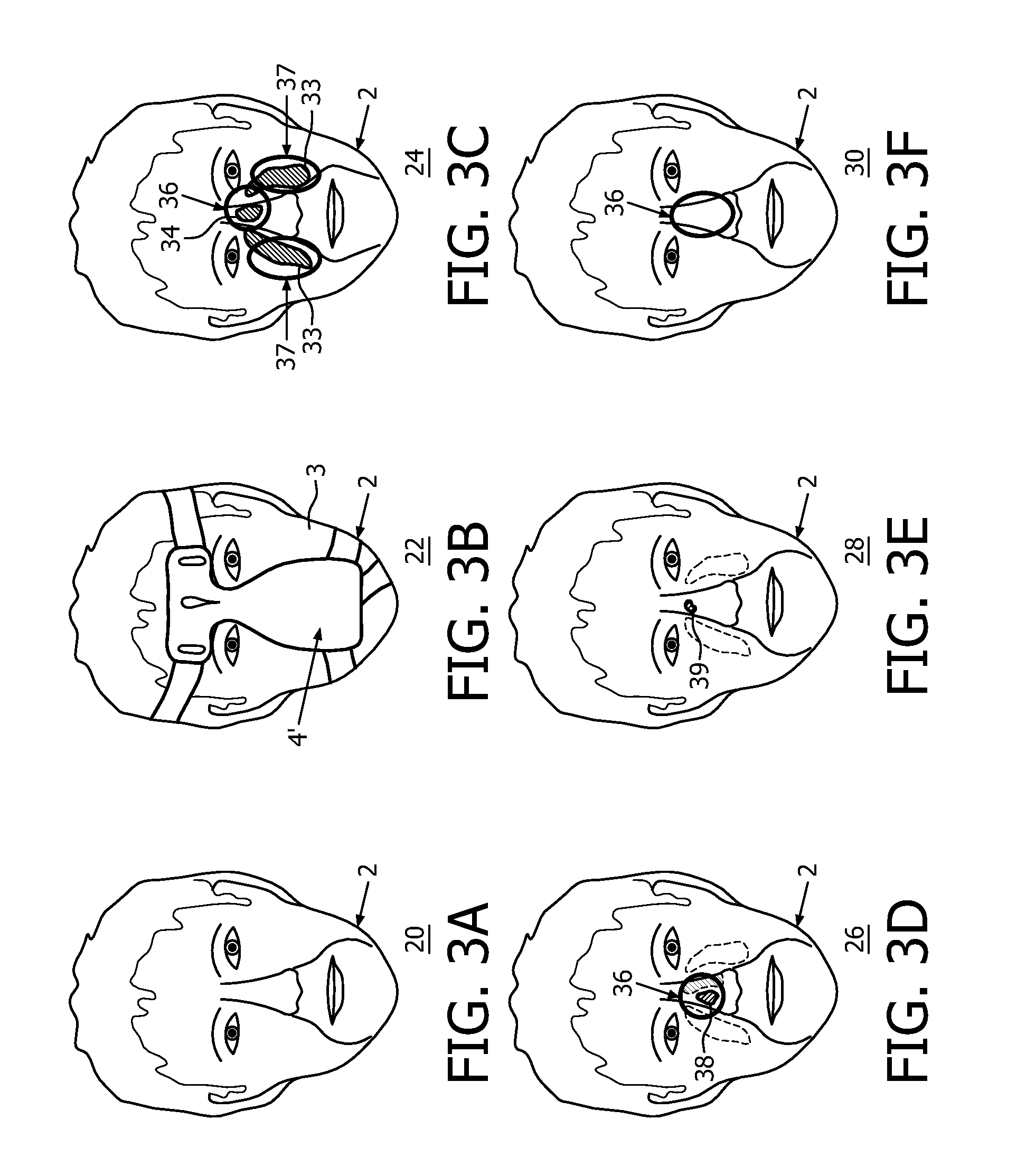Mask comfort diagnostic method
a mask and comfort technology, applied in the field of patient evaluation methods, can solve the problems of minor red marks, open sores, and all patient interface masks generate some level of discomfort, and achieve the effects of reducing blood flow, effective visualizing, and reducing blood flow
- Summary
- Abstract
- Description
- Claims
- Application Information
AI Technical Summary
Benefits of technology
Problems solved by technology
Method used
Image
Examples
example 1
[0026]Referring to FIGS. 1 and 2, the example evaluation method includes four example steps using a suitable thermal imaging apparatus 14, which provides a plurality of (e.g., without limitation, color, grayscale, raw temperature data (e.g., matrix data)) thermal images 16.
[0027]First, at 6, a baseline thermal image of patient 2 is acquired. This outlines initial temperature variations based on physiology and can be done by a clinician or an assistant, or can be automated or semi-automated.
[0028]Second, at 8, patient 2 wears object 4 (e.g., without limitation, a test mask) for a suitable predetermined time period. This predetermined time period can be timed by a clinician or an assistant, or can be automated or semi-automated.
[0029]Third, at 10, upon removal of example test mask 4, thermal images are acquired at suitable predetermined time intervals. This acquisition can be done by a clinician or an assistant, or can be automated or semi-automated.
[0030]Fourth, at 12, the time neede...
example 2
[0032]Steps 6,8,10,12 can, for example, be fully automated in the form of an example kiosk (not shown). For example, a “picture booth” type kiosk (not shown) can employ indicators for what to do to acquire the baseline thermal image of patient 2, when to initially put example test mask 4 on patient 2, when to take the example test mask 4 off patient 2, what to do to acquire thermal images at predetermined time intervals, and optionally when the testing is concluded after a thermal image returns to baseline thermal image of step 6. For example, suitable equipment (not shown) can time and decide that the thermal image returns to the baseline thermal image by employing suitable automatic image comparison tools (not shown) and / or facial recognition software (not shown). Such equipment can also determine the relative size and temperature change of the affected areas as indicators of potential pressure sores or discomfort by employing suitable automatic image analysis tools (not shown).
example 3
[0033]The predetermined time period of step 8 can be as short as about 5 minutes to about 10 minutes, the latter of which is the approximate time corresponding to representations of thermal images 20, 22, 24, 26, 28, 30 of FIGS. 3A-3F and representations of thermal images 40, 42, 44, 46, 48, 50 of FIGS. 4A-4F. Example thermal images 60, 62, 64, 66, 68, 70 are shown in FIGS. 5A-5F corresponding to respective FIGS. 3A-3F, and example thermal images 80, 82, 84, 86, 88, 90 are shown in FIGS. 6A-6F corresponding to respective FIGS. 4A-4F.
PUM
 Login to View More
Login to View More Abstract
Description
Claims
Application Information
 Login to View More
Login to View More - R&D
- Intellectual Property
- Life Sciences
- Materials
- Tech Scout
- Unparalleled Data Quality
- Higher Quality Content
- 60% Fewer Hallucinations
Browse by: Latest US Patents, China's latest patents, Technical Efficacy Thesaurus, Application Domain, Technology Topic, Popular Technical Reports.
© 2025 PatSnap. All rights reserved.Legal|Privacy policy|Modern Slavery Act Transparency Statement|Sitemap|About US| Contact US: help@patsnap.com



